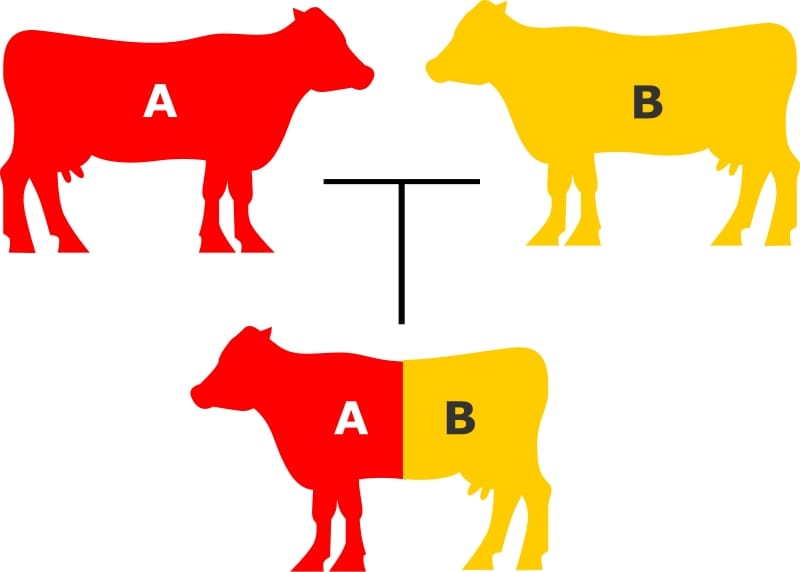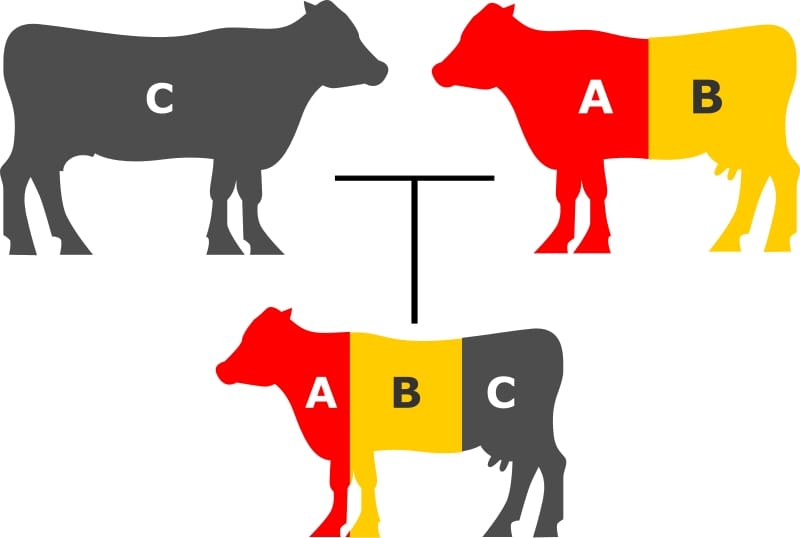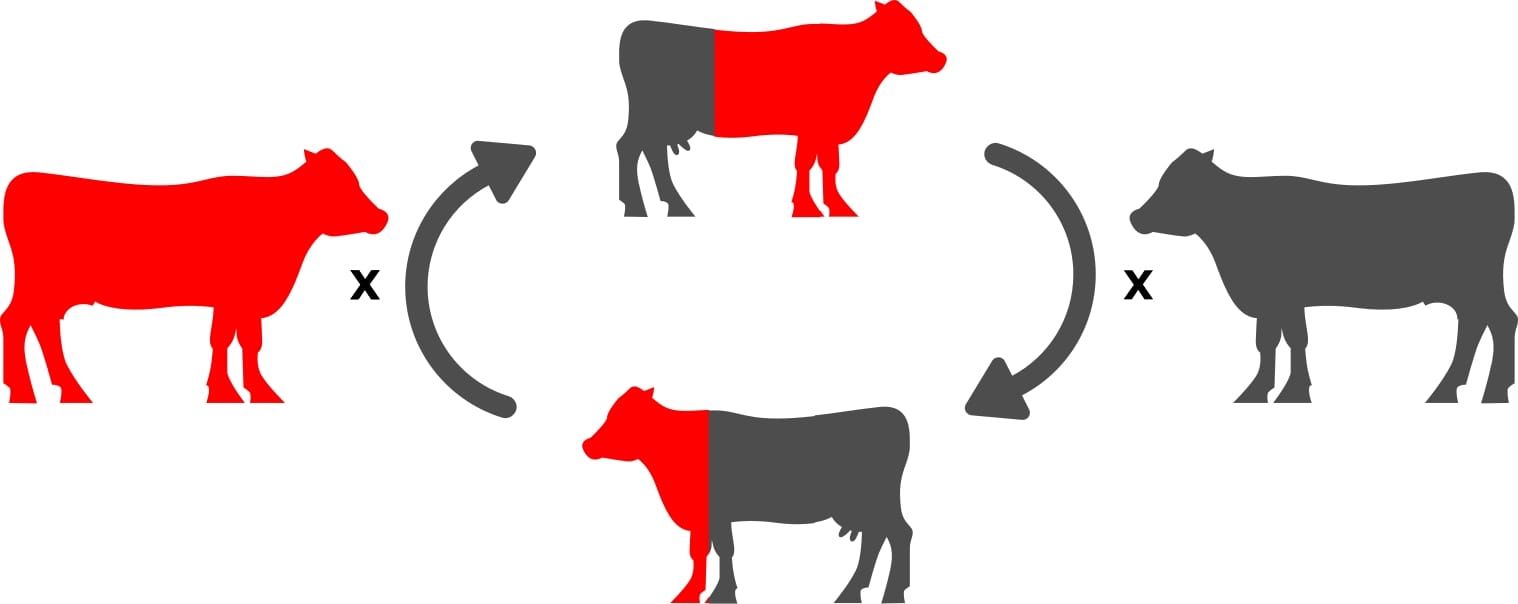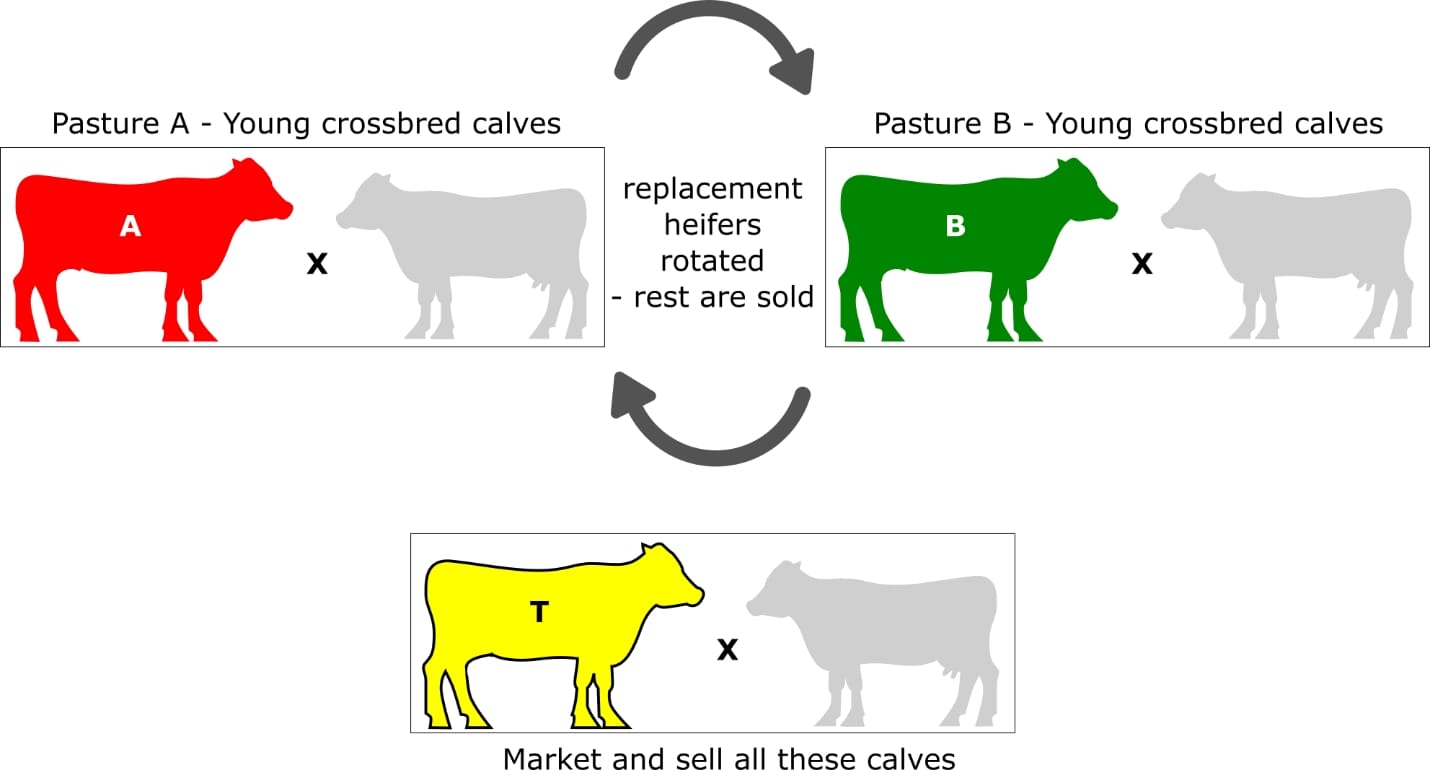Are you considering crossbreeding to improve herd fertility and farm profits? If so, you’ve come to the right place.
In part one of this crossbreeding series, we introduced you to the various advantages and limitations of crossbreeding.
Now in part two, we cover the various crossbreeding systems. And help you find the right one for your needs.
How to evaluate a crossbreeding system:
For a crossbreeding system to be effective – it needs to be manageable and at the same time should also help you propagate profitable genetic traits into your herd.
So, choose a system that optimises both heterosis and complementarity, and also fit within your current farm operations.
Here are a few key factors to consider:
- the number of cows in your herd
- the number of breeding pastures available
- the labor skills at your disposal
- the quality and quantity of feed available
- your production process
- your marketing process
- the quality of bulls available from various breeds
There are three types of crossbreeding systems – Terminal, Rotational and Composite. Let us take a quick look at all three.
The Terminal Cross:
This is the simplest system. All your offspring are marketed and sold. And you buy replacement heifers of a certain breed type and quality.
By doing so, you ensure that your crossed offspring take full advantage of desirable maternal heterosis traits. And by using artificial insemination or a high-quality sire, you can maximise paternal heterosis.
However, because you sell all your offspring in this system, you won’t be able to take advantage of individual heterosis.
Also, your breeding costs may be higher, because you end up buying heifers every year. Yet this can be your best bet if you want a simple system that works without any trial and error.
While choosing terminal crossing, you can either use two or three breeds.
Two-breed Terminal:
In this system, you cross straight bred females with bulls from a different breed and the offspring is termed as F1.
You will only need one breeding pasture, one sire breed, purchased replacement heifers, minimal labor and management and so this simple system is applicable to herds of any size.

Three- breed terminal:
This is quite similar to the two breed terminal system, except that your cows would have to be crossbred (AxB) and you mate them to sires of another breed.
This terminal system yields more heterosis in the cow and calf, improving both growth rate and reproduction. Even here, only one breeding pasture is needed. And you get 100% individual as well as maternal heterosis.

Rotational Crossing System:
Two-breed Rotation/ Crisscross:
This system involves two breeds and two breeding pastures. Main difference is that unlike terminal crossing, you don’t sell your offspring.
When you cross the sire of breed A with a heifer of breed B you get AB calves.
After this, for every next generation, you cross the offspring with the sires of both breeds, alternatively. For example, generation two will be crossed with a sire of breed B, and then generation three will be crossed with a sire of breed A.
For best results, both breeds of bulls need to have comparable traits of birth weight, mature size, and milk production.

Because you retain your replacement heifers, in this system, you get the advantage of both individual and maternal heterosis. However, you will also need additional land, labor and management.
Cost and availability of these resources need to be considered. This system can also get complicated while maintaining a large herd size of over a thousand cows.
Three-breed Rotation:
The three- breed rotation system is similar to the two-breed rotation, but with another breed added.
You have to use sires of breeds A, B and C alternatively. Mate Breed A to cows sired by breed B, mate breed B sires to cows sired by breed C, and mate breed C sires to cows sired by breed A.
You will need three breeding pastures and you will be retaining replacement heifers from within the herd.

There is an increase in hybrid vigor over the two-breed rotation system. However, you will incur additional costs for breeding pastures, bull maintenance, labor and management.
You have to be extremely cautious in sire selection. It is a good plan to use this three-breed rotation when you have fewer cows and a minimum herd size of at least 75 cows.
Four- breed Rotation:
Similar to the two and three breed rotation systems, you will use four breeds of sires in four breed rotation.
Mate breed A sires to cows sired by breed B, mate breed B sires to cows sired by breed C, mate breed C sires to cows sired by breed D, and mate breed D sires to cows sired by breed A.
You will need four breeding pastures, four sire breeds, and you retain replacements heifers from within the herd.
Roto-terminal systems:
The roto-terminal system is a hybrid-crossbreeding program that uses elements of both the terminal and rotational systems.
On one hand, you will place a percentage of heifers in the two-breed rotation with terminal sire system. This will produce your replacement heifers.
On the other hand, you will mate the remaining heifers to a terminal sire. This will produce your market calves.
Your herd production is maximized in this system, because you utilise higher heterosis in terminal calves. And at the same time, you are also producing all your own replacements.

Other crossbreeding systems:
Rotate Bull Every Four Years:
You will use a single breed of sire for four years and then change to a second breed for the following four years, then you will get back to the original breed of sire for the next four years, and so on.
Composite Breeds:
In this system, you would mix traits of economic value from many different breeds and create a composite straight-bred herd. Such composites are popularly used for large and small herds, since it is a simple system to manage and also retains heterosis and complementarity.

Sire selection:
Like many other dairy farmers, you would retain as replacements, most of the cows produced from your herd and retain only a few bulls.
Bull or sire selection, whether purchased on from within your herd, should be focused on four important traits:
- Fertility
- Growth
- Production
- Temperament
Your selection criteria should be measurable, moderately heritable, under genetic control and economically profitable.
When selecting a bull, ask these questions that will match the bull to the cow herd:
- Do weaning weights need to be improved? If so, growth performance is a priority in the selection process.
- Does calf crop color uniformity need improvement? If so, color pattern inheritance is an important consideration in bull selection.
- Will the bull be bred to heifers and is limited labor available to assist with calving? If either is the case, calving ease is a priority.
Farmers in the past have used visual estimation to predict growth and production values of bulls. But now you have EPD or expected progeny difference, an accurate estimate of bull genetics for the measured traits, to help you compare sires from different herds.
Different breeds will have EPDs available for different traits; however, most breeds have basic EPDs, such as birth weight, weaning weight, yearling weight and milk.
Artificial Insemination:
You could also choose to use artificial insemination to help your crossbreeding program. AI significantly reduces the number of breeding pastures required and the number of bulls and breeds, thereby reducing your labor and operation costs dramatically.
Regardless of the crossbreeding system that you choose to implement, crossbreeding is a long-term strategy that requires your 100% commitment to achieve your profitability goals. Just remember:
- Heterosis makes you money
- Match cows to their environment
- Match bulls to your markets
- Educate yourself about crossbreeding
That brings us to the end of this article. If interested, please do check our other articles on animal health.
- The Dedicated Team of Pasture.io, 2020-12-14